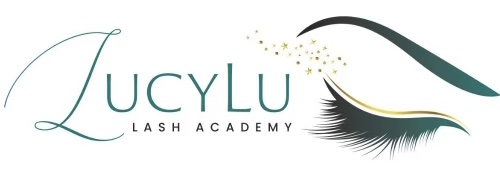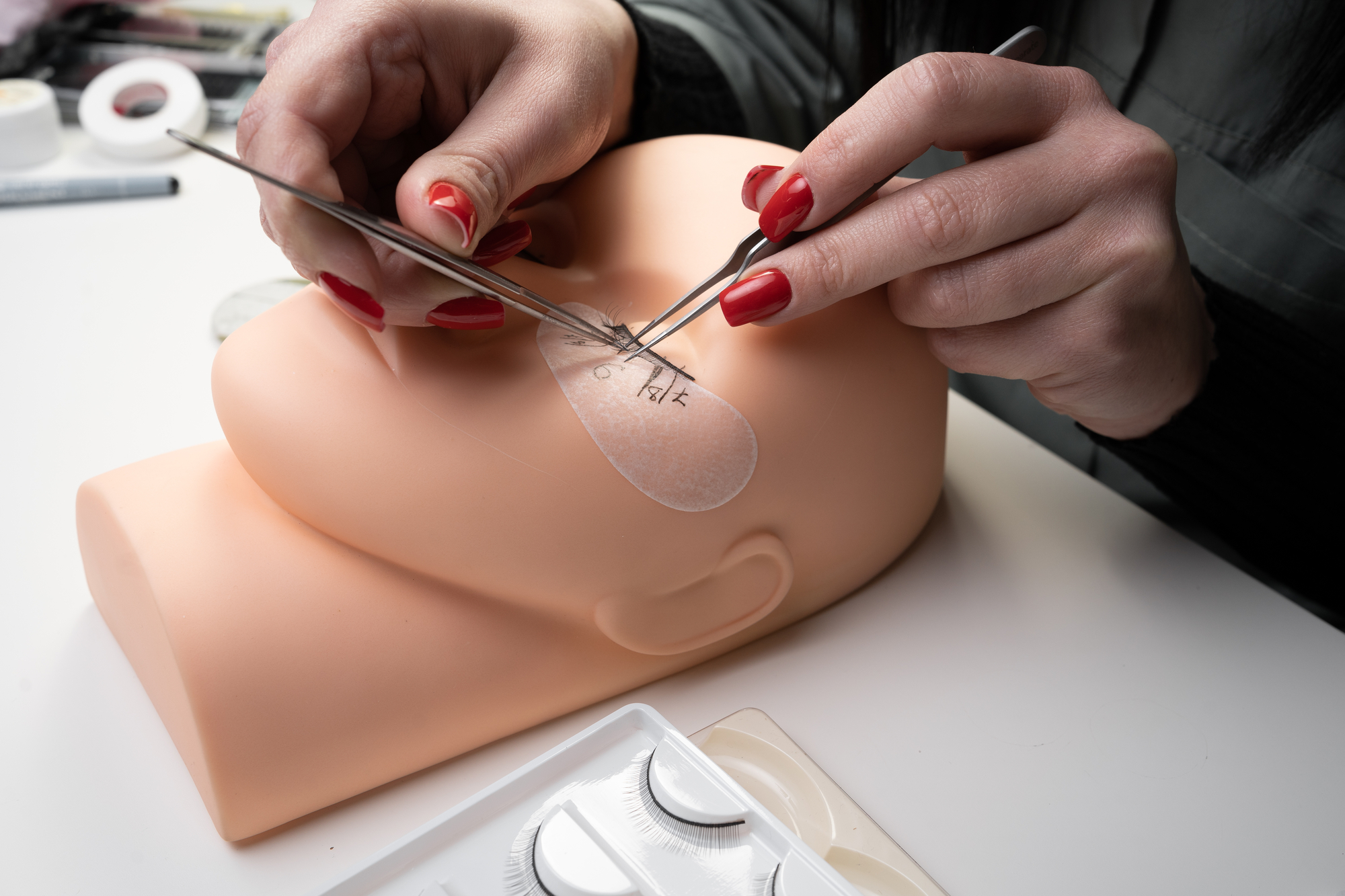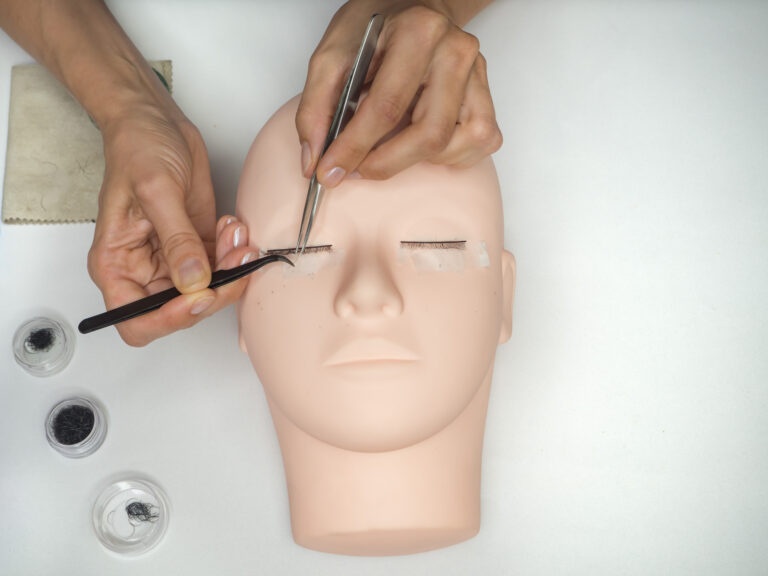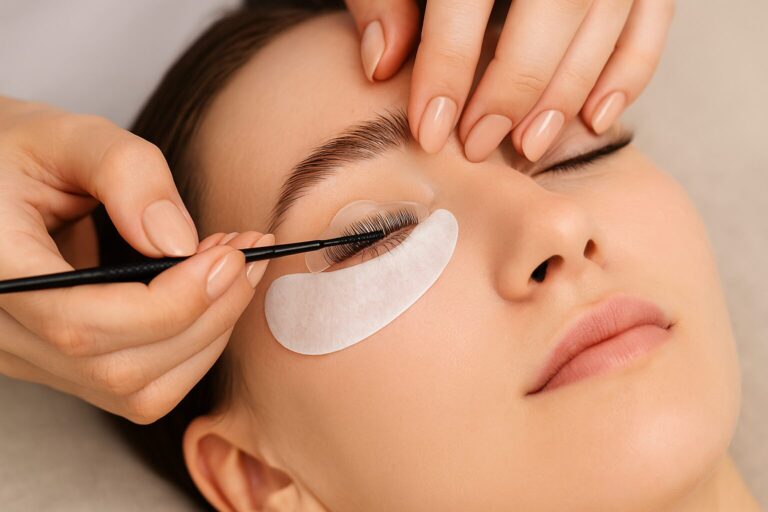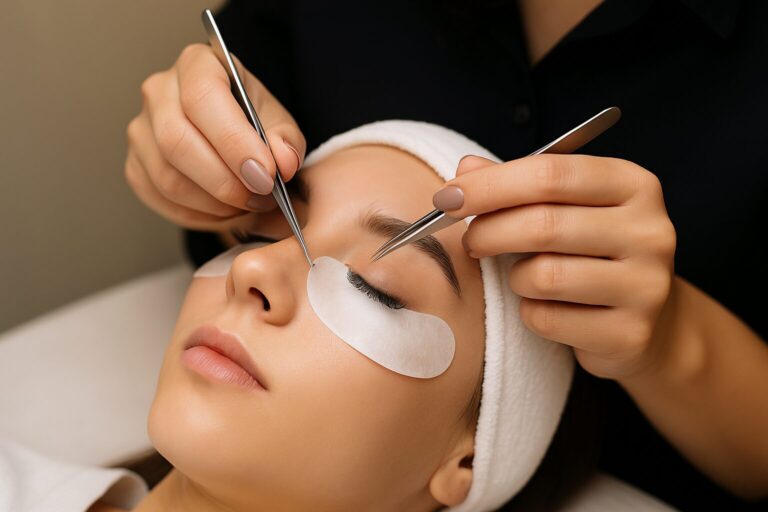How to Do Ghost Lashes and Angel Lashes: What’s the Difference and A Guide for Each
How to Do Ghost Lashes and Angel Lashes: What’s the…
How to Do Ghost Lashes and Angel Lashes: What’s the Difference and A Guide for Each
Lash trends are always evolving, and 2025 has brought two styles that are quickly becoming the most requested looks in lash salons: ghost lashes and angel lashes. If you scroll through TikTok or Pinterest, you will see these names popping up again and again. They both promise a softer, more airy appearance than traditional lash styles, but they are not the same.
This guide will take you step by step through what ghost lashes and angel lashes are, the difference between them, how to map and apply each style, and what aftercare your clients need to keep them looking beautiful. By the end, you will not only be able to explain these trending styles with confidence, but also create them for clients who want something modern and delicate.
What Are Ghost Lashes

Ghost lashes are the barely there version of lash extensions. The idea is to give the illusion of fullness and lift without obvious density. They are airy, subtle, and designed to enhance the natural lashes without making them look too obvious.
Clients who love ghost lashes are usually women who want a clean girl aesthetic. They like makeup that looks effortless, and they want to appear fresh and awake without anyone being able to tell exactly why. Think of ghost lashes as a filter for the eyes that whispers instead of shouts.
The technique usually involves very light fans, thin diameters, and strategic spacing to avoid heaviness. You are creating a lash line that looks almost natural but with more symmetry and brightness.
What Are Angel Lashes
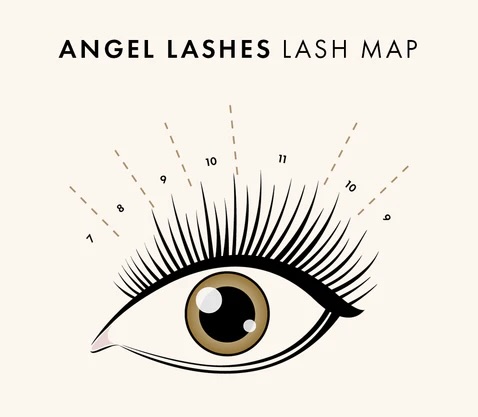
Angel lashes are also soft and delicate but lean slightly more defined than ghost lashes. They combine aspects of the wet look and classic sets, with fine spikes or wisps that resemble feathers. The name angel comes from their light, fluttery appearance that looks almost ethereal.
Clients who want angel lashes often say they want their lashes to look dainty, feminine, and pretty without the thickness of volume sets. Angel lashes are perfect for brides, photoshoots, or anyone who wants to elevate their eyes in a way that is noticeable but still gentle.
Where ghost lashes are ultra subtle, angel lashes are soft but still structured enough to stand out.
The Difference Between Ghost and Angel Lashes
At first glance, ghost and angel lashes may seem similar. They both are part of the minimalist lash trend, focusing on softness and airiness instead of heavy fullness. But there are important distinctions that you need to understand as a lash artist.
- Density: Ghost lashes are the lightest of the two, with less coverage and more visible gaps to mimic natural growth. Angel lashes are fuller, with defined wisps for added shape.
- Texture: Ghost lashes have a smooth, even look that melts into the natural lash line. Angel lashes feature small spikes or feather-like textures for a daintier effect.
- Client Result: Ghost lashes say “no makeup, just good genes.” Angel lashes say “I am feminine and soft, but I still want my lashes to show up in photos.”
- Technique: Ghost lashes require restraint and precise spacing to avoid overfilling. Angel lashes require a balance between wisp placement and filler lashes to create that airy halo effect.
Mapping Ghost Lashes
Mapping ghost lashes requires discipline because less is more. Here is a guide:
- Inner corners: Start short, around 7 to 8 mm depending on the client’s natural lashes.
- Main section: Keep most of the lashes between 9 to 10 mm, focusing on consistency rather than spikes.
- Outer corners: Taper slightly back down to 8 or 9 mm to avoid heaviness.
- Overall look: The map should look simple and minimal, without dramatic peaks.
The goal is a continuous soft line, not dramatic contrast. Ghost lashes are about enhancing what is already there, not creating new texture.
Technique for Ghost Lashes
Ghost lashes are delicate, so the technique has to match.
- Choose a fine diameter: 0.03 to 0.05 mm for volume fans or 0.10 mm for classics.
- Fans should be narrow: Wide fans will add too much fluff, while narrow fans keep it controlled and wispy.
- Use fewer lashes per fan: Two to three lashes per fan are often enough.
- Mind your spacing: Do not place extensions on every natural lash. Leaving small gaps creates the ghost-like softness.
- Keep isolation clean: Each lash needs to stand alone so the effect looks polished rather than messy.
Mapping Angel Lashes
Angel lashes require more variation than ghost lashes. The map should balance soft fillers with occasional wisps or spikes.
- Inner corners: Start with 7 to 8 mm for softness.
- Transition zone: Increase gradually to 9 to 10 mm.
- Wisp placement: Add spikes of 11 to 12 mm across the midsection and outer third. These create the feathered, angelic texture.
- Outer corners: Keep around 9 to 10 mm so the eye does not pull downward.
Think of angel lash mapping as a hybrid between a classic set and a light doll lash map, but without the bold central peaks.
Technique for Angel Lashes
Angel lashes need softness but with noticeable texture.
- Diameter choice: 0.05 to 0.07 mm for volume, 0.12 mm for classics.
- Fan strategy: Use a mix of narrow and slightly wider fans to build layers.
- Spikes: Create thin, closed fans or single extensions that are slightly longer than the surrounding lashes. Scatter them evenly so the set looks balanced.
- Filler lashes: Between spikes, fill with shorter fans to add fluff without bulk.
- Symmetry check: Make sure spikes are mirrored on both eyes for a harmonious look.
Common Mistakes With Ghost and Angel Lashes
Even though these styles are lighter than traditional sets, they still come with challenges.
- Overfilling ghost lashes: If you add too many extensions, the look loses its airy charm and becomes a standard set.
- Uneven spacing for ghost lashes: Gaps need to be intentional, not random. Unevenness can look like poor application instead of a clean aesthetic.
- Messy spikes in angel lashes: If spikes are crooked or too thick, the angel lash look turns clumpy.
- Too much length variation: Angel lashes should look fluttery, not chaotic. Keep variation subtle.
Aftercare for Ghost and Angel Lashes
Since both styles are lighter, they can feel delicate to clients. Proper aftercare ensures they last and look beautiful between fills.
- Cleansing: Encourage clients to use a lash cleanser every two to three days to remove oils and debris. This keeps the lashes fluffy.
- Brushing: A daily gentle brush with a clean spoolie helps maintain separation, especially for angel lash spikes.
- Sleeping: Suggest a silk pillowcase and encourage clients to avoid face sleeping that could flatten the delicate texture.
- No oils: Remind clients that oil-based products will weaken retention.
- Fill schedule: Ghost and angel lashes may need fills slightly more often since they rely on precise spacing and texture. Two to three weeks is usually ideal.
Who Should Get Ghost Lashes vs Angel Lashes
When a client asks for one of these trending styles, it is important to help them choose what truly suits their lifestyle and eye shape.
- Ghost lashes are perfect for: Women who wear little to no makeup, professionals who want a very natural look, or those with strong natural lashes who want just a boost.
- Angel lashes are perfect for: Women who enjoy a soft feminine style, brides and event clients, or anyone who wants lashes that are visible in photos but not overpowering.
Why These Styles Are Growing in Popularity
Both ghost and angel lashes align with the growing demand for minimalism in beauty. The trend has moved from heavy contouring and dramatic falsies to a softer, more effortless look. Clients want to look polished without appearing overdone.
On social media, especially Pinterest and TikTok, these sets photograph beautifully. They catch attention because they look natural yet enhanced. This makes them very shareable, which is why more and more clients are walking into salons asking for them by name.
For lash artists and academies, offering these trending styles positions you as modern and trend-savvy. Students want to learn the latest techniques, and clients want to know their lash tech is up to date.
Final Thoughts
Ghost lashes and angel lashes may sound similar, but they are distinct styles with unique mapping and application methods. Ghost lashes are the softest, almost invisible set that enhances without drawing attention. Angel lashes are delicate yet noticeable, with feathered spikes that add definition.
Mastering both styles gives you flexibility as a lash artist. You will be able to serve the client who wants the ultimate clean girl aesthetic as well as the one who wants a dreamy, feminine touch.
Trends will continue to come and go, but these styles fit into the long-term movement of beauty looking more natural, airy, and graceful. When you understand how to create them properly, you can offer a service that not only makes your clients feel beautiful but also positions your lash business or academy as a leader in artistry and innovation.
